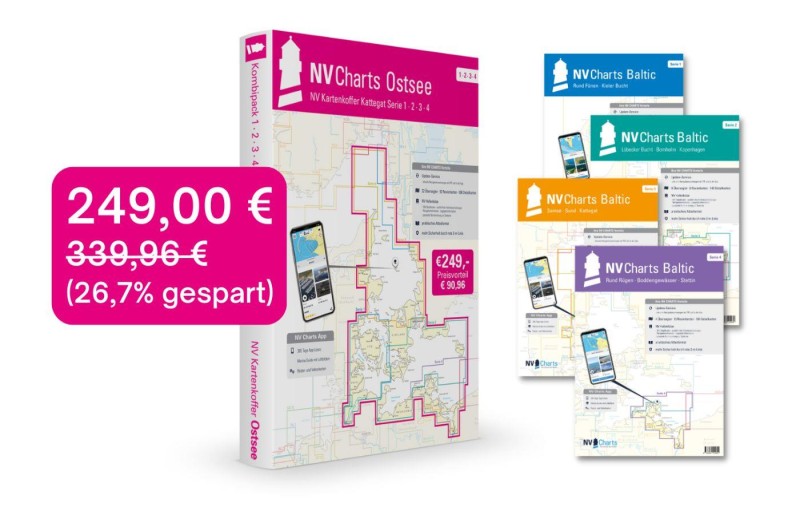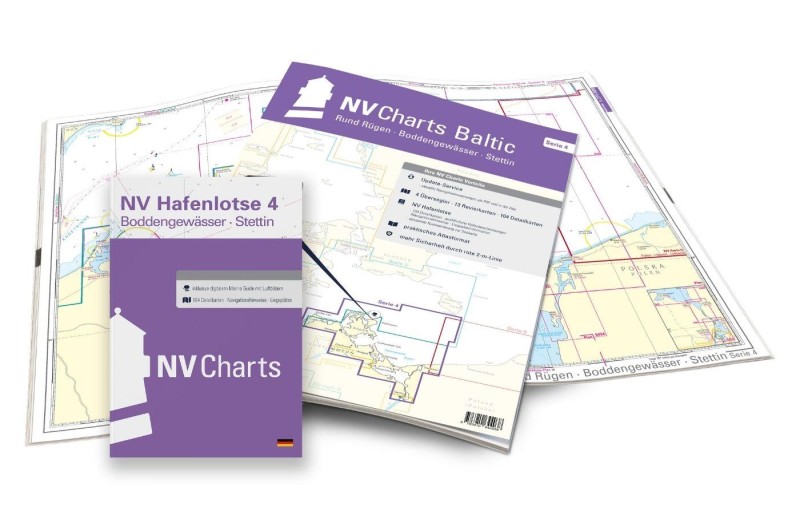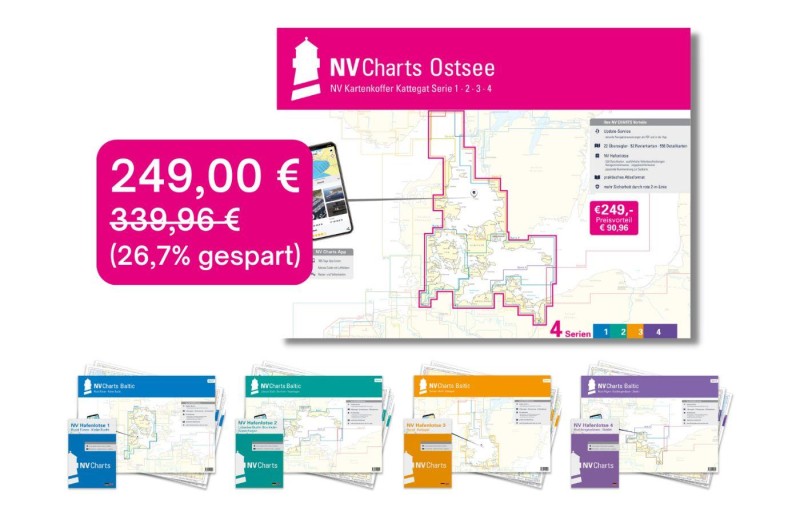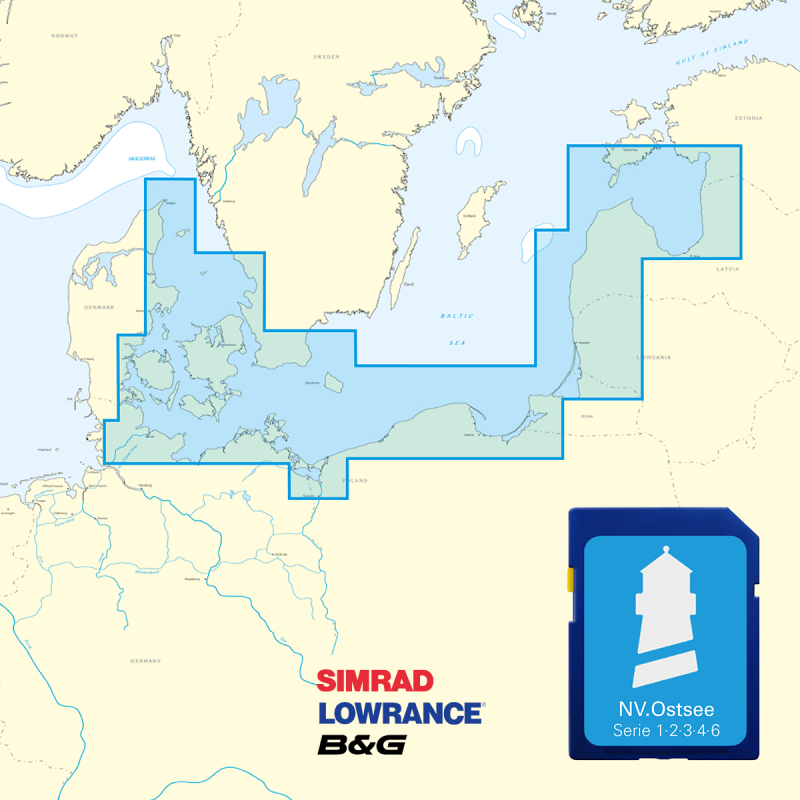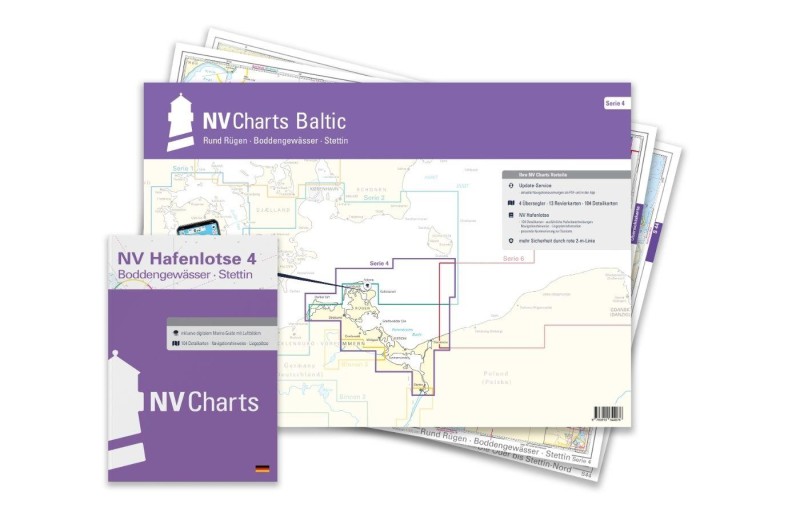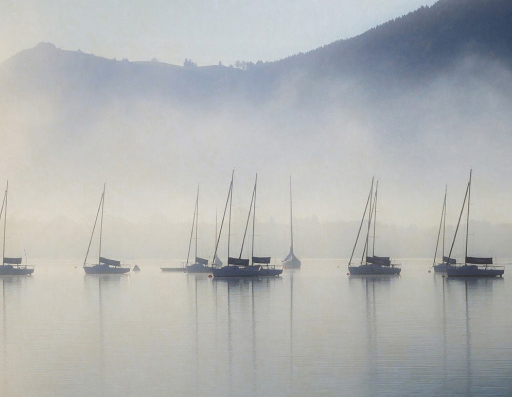Gager
Marina near Mönchgut
Latitude
54° 18’ 39” NLongitude
13° 40’ 58.6” EDescription
Protected fishing and recreational boat harbor in the Hagen Wiek.
NV Cruising Guide
Navigation
The access to the port is through a buoyed but unfired channel (target depth 4m). Minimal depths due to silting must be expected.
Berths
Guests use free places at the west pier or the north pier. At the pier head, the berth for the passenger ship must remain free. At the south pier the two western jetties can be used. Mooring is at stern buoys on water depths over 4m.
In northwesterly winds, swell in the harbor is to be expected.
Surroundings
Directly at the port are modern sanitary facilities, electricity, drinking water and a merchant.
NV Land Guide
The thatched houses of the village are scattered at the foot of the grassy mountains of the southern tip of Mönchgut on the island of Rügen. The gentle, largely treeless hills around the 66-meter-high Bakenberg are used as pasture land for flocks of sheep. Many of the houses present themselves in old building styles. Even the bus shelter of the small village is covered with reeds. Less uplifting is the campsite directly at the harbor and the fences drawn by fishermen. However, the campsite offers more sanitary facilities, drinking water and a merchant.
On the former shipyard site is the noble vacation home settlement "Mönchgut Living & Spa". Now as a guest lounge, it also includes the restaurant formerly popular with harbor berth holders.
Whether the princes of Putbus wanted to do something for their salvation around 1290 or were happy to get rid of the less fertile southeastern tip of Rügen for a good price has not been handed down. In any case, at that time the land passed into the hands of the monks of the Eldena monastery (see: Greifswald Wieck). Among other things, the cowl bearers will have liked the fact that they could separate their territory from the "rest of the world" without much effort. A short but deep ditch at the narrow land connection north of Baabe was enough to keep them out. But they had already proved that they were concerned with profane things like profit when they founded the market town of Greifswald.
For a long time they were isolated from the rest of the development on the island, and the Mönchgut people got the reputation of being idiosyncratic and even backwoods. Their dialect and stubborn adherence to traditions were mocked. It was even said that they could never tell the time exactly, because they spoke so slowly that a minute always passed. This was especially true of the men. The pipe smoke was sometimes all that moved about them. Until the beginning of the 20th century, they dressed traditionally with their traditional costume, which can be seen in the Göhren Museum . A fashionably dressed Mönchgut woman also ran the risk of not being married, as it was possible to tell from the cap of the traditional costume whether she was still a virgin or already married. And with just 700 inhabitants in 1800, word of such extravagances had spread quickly.
The fixed dress code for all sorts of occasions and conditions (for example, wedding or mourning) was as much a part of life as well-worn rites. The wedding feast, for example, was governed by a set of rules of conduct. A handshake of the bride and groom in the churchyard, a tearful farewell of the bride from the parental home (if this included leaving the village) and the separation of both sexes shortly after the wedding were part of the ceremony. In the company of the other women, the newlyweds first drank warm beer with raisins, before the common feast began - according to fixed verses and actions. The wedding could last a good ten days with preparations. This included the fact that the invited fishermen had to catch the fish needed for the wedding feast, which they did only if they were given plenty of food and alcoholic beverages along the way.
Despite the small number of peninsula inhabitants, Mönchgut remained for a long time its own world consisting of only nine villages of loud acquaintances and relatives. People lived mainly from fishing, field work and pilotage on the ships that sailed between Pomerania and Rügen. The towns of Goehren, Thiessow and Lobbe shared the pilotage, which could be a hard bread, because the pilots had to reach the ships even in heavy seas according to their strict laws.
The legend tells of a pilot who fished with his boat at night off the coast of Mönchgut. Then, as if from nowhere, a huge, dark ship appeared in front of him and a voice that brooked no dissent ordered him to get on board. Standing on deck, a tall dark figure said only one sentence: "Take us to the Sound," after which there was dead silence until the pilot had solved the extremely difficult task of navigating around the shoals of the Greifswald Bodden at night. The hulking figure took the helm again and shortly after gave the order to anchor. Before daylight, the pilot was brought ashore. When he looked into the leather bag that the big man had put in his hand and found a princely reward there, he knew who he had piloted: Störtebeker.
Whoever wants to know more about stories, traditions and ways of life of the Mönchgut people will probably have to make his way to the museum in Göhren. A beautiful hiking trail leads directly along the Hagen Wieck to the northeastern Middelhagen. From Middelhagen (school museum and Büttnerhaus) a hiking trail leads straight to the seaside resort of Göhren. The beautiful detour along the beach from Lobber Ort is also a good option. At the foot of the Lobber Ort cliff lies an impressive boulder in a boulder field. Unlike other erratic blocks on the coast, the 17-cubic-meter stone protrudes 90 percent from the water.
About Göhren, the well-known chronicler of the island of Rügen Johann Jacob Grümbke writes in his "Streifzügen durch das Rügenland," first published in 1805, that the village lies partly on a hill and partly in a depression. The village is quite large and mostly inhabited by pilots. The entire coastal region is called the Peerd because it looks like a horse shape for the skippers at sea.
The walk to Groß Zicker, the nearest port, is not far. It leads from Gager directly south up the Kahler Berge and past the highest vantage point on Mönchgut (66 m high Bakenberg). Whether on foot or by boat, this over 800 year old village is definitely worth a visit. The "Pfarrwitwenhaus", built around 1720, is one of the oldest preserved buildings in the region and today houses a museum. On the way over the hills near Gager you pass the remains of a demolished mill, including two well-preserved millstones.
Also by foot (about 30 min in an easterly direction) you reach the seaward bathing beaches south of Lobbe on the east coast of the peninsula.
Marina Information
Contact
| Phone | +49 1795 160 104 |
| Please enable Javascript to read | |
| Website | http://marina-gager.com/ |
Surroundings
Electricity
Water
Toilet
Shower
Internet
Grocery
Ramp
Public Transport
Bikerental
Garbage
Comments
You can add comments with the NV Charts App (Windows - iOS - Android - Mac OSX).
You can download the current version at nvcharts.com/app.
Buy nv charts covering this place Clicking one of the products will open the nv charts shop.
Places nearby
Related Regions
This location is included in the following regions of the BoatView harbour guide:
